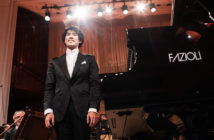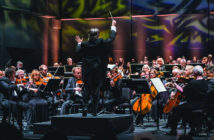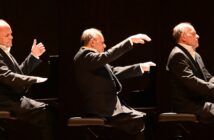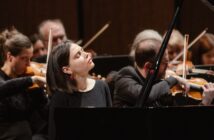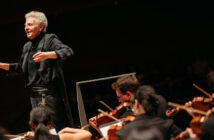This page is also available in / Cette page est également disponible en:
![]() Francais (French)
Francais (French)
The Bergen International Festival takes its “international” modifier seriously. There are offerings in various genres and many that could be classified as experimental. The American Moth, to choose one of the signature 2021 presentations, is described as a “multi-media performance combining dance, theatre in multiple languages and cinematic live video” in the interests of exploring “the sympathies and resentments at play in inter-generational relationships.”
Well, having enjoyed my Grieg last week from the Bergen Philharmonic, I chose to keep it simple and hear a recital in the living room of Troldhaugen, the composer’s villa on the outskirts of town. Of course I was not there in person, but neither was anyone else apart from the pianist Ole Christian Haagenrud and the audio-visual team charged with livestreaming his 55-minute program (subtitled commentary included).
This Norwegian in his early thirties studied with Håvard Gimse, the soloist last week in the aforementioned performance of the Grieg Piano Concerto. Perhaps we can detect the influence of the elder pianist in Haagenrud’s natural way with a phrase and preference for clear textures, notably in a transcription of the Prelude from Grieg’s Holberg Suite, which got the program off to an invigorating start. There were pleasures also in three of the composer’s character pieces, especially Butterfly, its scalar flutterings done to perfection. In the March of the Dwarfs the little fellows seemed to be on the run, in defiance of the Allegro moderato marking. In neither this nor From the Carnival did I hear any reason to regard Grieg as a composer of soft-focus miniatures. The approach was full and decisive.
We heard short pieces by other composers, including Schubert, Chopin, Brahms and Rachmaninoff. From festival composer-in-residence Missy Mazzoli came A Map of Laughter, a minimalist number that ended suddenly (and without seeming particularly funny). Trygve Madsen’s appealingly quirky Prelude Op. 20 No. 2 offered more to listen to, as did the Variations Op. 41 of Nikolai Kapustin (1937–2020), an overtly jazzy take on the opening bassoon theme of The Rite of Spring.
A little of this, a little of that. This was a salon-style recital, done in a salon. But giving it a certain gravitas was Grieg’s own 1892 Steinway, whose vintage was betrayed by its Victorian carved legs and a distinctive tone that had some irregularities but also an abundance of charm. I wrote the word “beefy” in my notes as a description of the bass sonority. It is hard to be more precise.
The busy camera operators offered everything from pans to closeups of Haagenrud’s hands and even reflections of his face in the well-polished bottom of the lid of the piano. While this pianist is described in some documentation as an “akkompagnatør,” he evinced the personality of a soloist and played everything from memory except for the Mazzoli. For this he used a tablet.
Imagine: a tablet on a 129-year-old piano. Anything these days is possible, including hearing the recital after the fact. It is available online until June 23.
This page is also available in / Cette page est également disponible en:
![]() Francais (French)
Francais (French)


